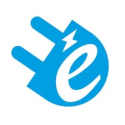Your Questions
How much does it cost to drive an electric vehicle in New Brunswick?
At eCharge Network charging stations, the cost to charge at a 240-V charge station is either an hourly fee of $1.50 an hour or a session fee of $3.00.
In New Brunswick, annual fuel costs for a battery electric vehicle is approximately $590 in electricity while a plug-in hybrid costs $775 in combined electricity and gas, compared to almost $2,500 in gas costs for a compact car. These costs are based on travelling 15,000 km per year. Actual savings will depend on the model of car and driving patterns of the driver.
In general, fully electric cars cost about one-sixth as much to 'fuel' using electricity, compared to a gas car. Electric cars also require less maintenance. They don't need spark plugs, oil changes, transmission fluid, mufflers or exhaust pipes.
Can all EVs be charged at the eCharge Network charging stations?
All plug-in EVs sold in North America since 2011 are equipped with a socket compatible with 240-V charging stations available in our network. Typically only 100% electric vehicles can charge at the DC Fast Charging stations.
Where can I get an eCharge Network card?
You can order your eCharge Network card in the MyAccount section. The card will be sent to you by mail. The cost of an eCharge Network card is $10 plus tax. Once you have ordered your card, you can add credits to the card by depositing money in your account in order to charge your vehicle at an eCharge Network charging station.
How can I pay for charging?
To use an eCharge Network charging station, you need to become an eCharge Network member. You can sign up and add credits to your account online here.
You can also access and pay for a charging session using the eCharge Network mobile app.
Can I use my eCharge Network access card at other public charging stations?
Your eCharge Network card and mobile app will also work with FLO charging stations located across Canada, and with Quebec's public charging network, the Electric Circuit.
What is the difference between networked and non-networked chargers?
Networked chargers have several advantages: they are actively connected to a management platform via a secure connection that monitors the health of charging stations; they authenticate users; bill users; and apply software updates. Non-networked chargers do not have these capabilities.
How do the eCharge Network Level 2 charging stations work?
You can order your eCharge Network card in the MyAccount section. Once you have become a member and have a card or have downloaded the eCharge Network mobile app:
- Pass your access card in front of the reader OR select the station in the eCharge Network mobile app and press "Start a Session".
- The charging connector will unlock, allowing you to plug it into your vehicle.
- As soon as the connector is plugged into your vehicle, the charging session begins.
Once your car is charged, place the connector back in its designated compartment and close the door.
What if the charging station doesn't work?
If you are having trouble using a charging station, call the toll-free number displayed at the station. This help-line has agents available to answer your call 24/7.
Where are eCharge Network stations located?
A map and complete list of addresses where eCharge Network charging stations are available can be found under Find a charging station.
Why do I need a physical member card when I can simply download and use the mobile app?
A physical card is always a good back-up plan. For example, in the following three scenarios you would need a member network card:
- The mobile application or your cell phone is not operating properly.
- You are in an area without cellular signal (for example, underground parking lot)
- The charger loses communication with the host system and is operating in standalone mode









 How to Use Chargers
How to Use Chargers Charger Types
Charger Types Join the Network
Join the Network Your Questions
Your Questions